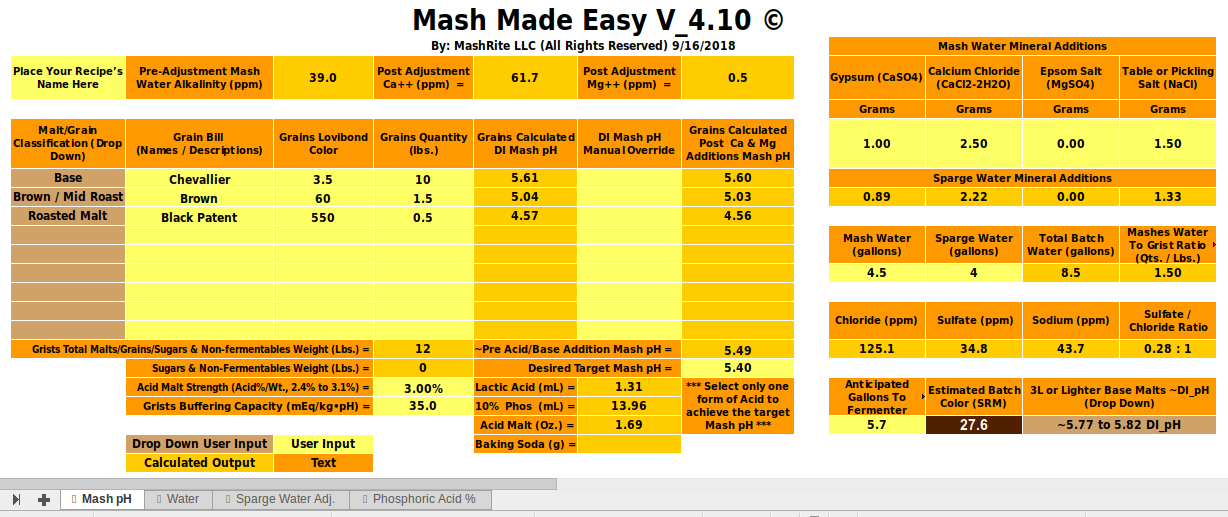Chris Grubb
Well-Known Member
- Joined
- Aug 21, 2018
- Messages
- 88
- Reaction score
- 18

Wow. Really? This is just my well water. Makes me feel a little better about having to drill 600+ feet for it.
Obviously the ph is high for most beers. I could use gypsum to lower that, right?
So for porter/stouts, what would you suggest adding?
What about IPAs?
Yeah, you gotta tell it what you're adding, then it will tell you what you have. I actually use it in conjunction with Beersmith. I use the water profile tool there to figure out my additions, then use Brewers friend to get a more accurate pH prediction, and figure how much/if I need acid.I plugged in my numbers on Brewer’s friend, but it didn’t populate the needed additions to achieve profile. I will play around with it more.
What is a good target for porter or stout, and What would you recommend adding to get this?

Wow. Really? This is just my well water. Makes me feel a little better about having to drill 600+ feet for it.
Obviously the ph is high for most beers. I could use gypsum to lower that, right?
So for porter/stouts, what would you suggest adding?
What about IPAs?
Enter your email address to join: